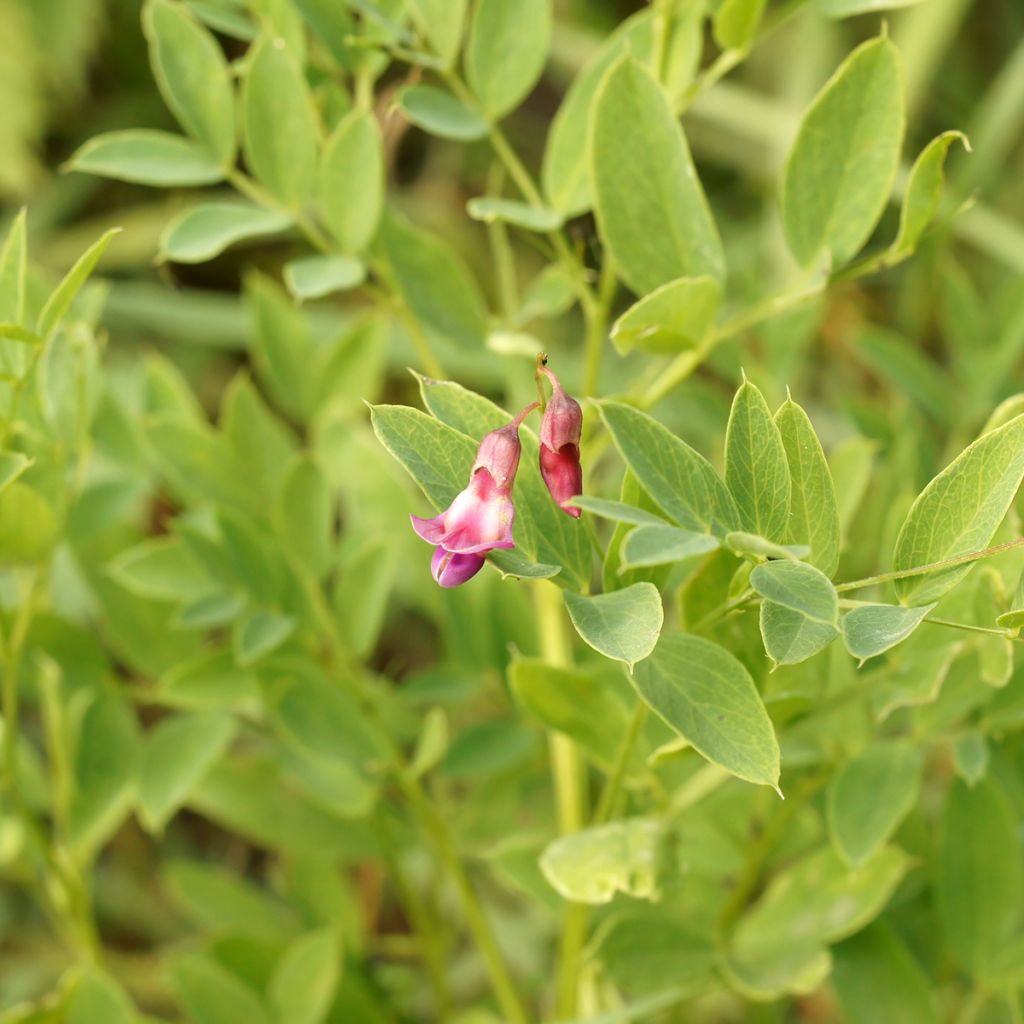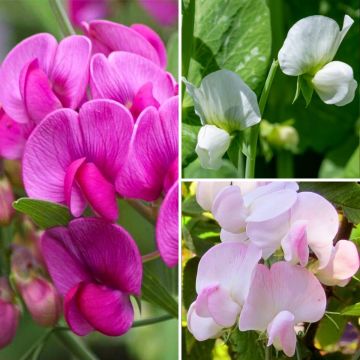

Lathyrus niger


Lathyrus niger


Lathyrus niger


Lathyrus niger
Lathyrus niger
Lathyrus niger
Black Pea
good service
Jean-Michel Y., 12/02/2019
Special offer!
Receive a €20 voucher for any order over €90 (excluding delivery costs, credit notes, and plastic-free options)!
1- Add your favorite plants to your cart.
2- Once you have reached €90, confirm your order (you can even choose the delivery date!).
3- As soon as your order is shipped, you will receive an email containing your voucher code, valid for 3 months (90 days).
Your voucher is unique and can only be used once, for any order with a minimum value of €20, excluding delivery costs.
Can be combined with other current offers, non-divisible and non-refundable.
Why not try an alternative variety in stock?
View all →This plant carries a 12 months recovery warranty
More information
We guarantee the quality of our plants for a full growing cycle, and will replace at our expense any plant that fails to recover under normal climatic and planting conditions.
Would this plant suit my garden?
Set up your Plantfit profile →
Description
Lathyrus niger, known as the Black Pea, is a curious botanical species, which is protected in its natural habitat. It is a rare plant in cultivation, which was once found in the wild in many regions, in undergrowth, on sunny slopes or on the edge of forests. This curious perennial pea does not rely on other plants for support through tendrils, but grows in an upright clump and flowers for a long period during the summer. It bears beautiful flowers with changing shades, ranging from a deep red colour to a purple-blue hue before fading to a greenish grey shade. They are followed by the formation of black pods, which often persist in winter on its entirely black and bare silhouette.
Lathyrus niger, also known as the Black Pea, is a cosmopolitan plant of the Fabaceae family, originally widespread throughout Europe, as well as Western Asia and North Africa, but has become rarer nowadays. It is a perennial herbaceous plant forming a clump of leafy stems reaching 50 to 60 cm (20 to 24in) in all directions. It consists of slender, hairy, non-winged angular stems, bearing small compound leaves composed of 2 to 8 ovate leaflets which are a vibrant spring green colour, reminiscent of those of the locust tree. Flowering occurs from June to August, depending on the climate, and lasts about two months. Short clusters bearing 2 to 10 pea flowers appear in the axil of the leaves. The initially purple-red flowers change colour, thus signalling to the bees that pollinate them that nectar is available: bees are more sensitive to the colour red and forage on the reddest flowers, while the blue flowers, once pollinated, no longer contain nectar. This flowering is followed by the formation of smooth, black pods, 3.5 to 6 cm (1 to 2in) long, each containing 6 to 8 seeds. In autumn, the entire plant goes into dormancy and takes on a uniform black colour, which earned it the name Black Pea.
Lathyrus niger is much less known and used in gardens than its relative, Lathyrus latifolius. However, it is just as easy to cultivate, even in limestone and poor soil, and takes up less space in flower beds. It can be accompanied by beautiful wild plants such as rose mallows, baptisias, mallow, astrantias, and chicory. It also looks stunning when paired with light yellow flowering plants such as Euphorbia polychroma or Baptisia bracteata. This perennial pea also thrives in front of a hedge of evergreen or deciduous shrubs, in the company of perennial Geranium macrorrhizum or dead nettles, for example. Pea-loving gardeners will also associate it with orange-flowered Lathyrus aureus, or the extremely rare Lathyrus pubescens, with blue-violet flowers.
Flowering
Foliage
Plant habit
Botanical data
Lathyrus
niger
Fabaceae
Black Pea
Central Europe
Other Lathyrus
View all →Planting and care
The black pea is cultivated in any well-drained, well-prepared, slightly acidic, neutral or slightly calcareous soil. It tolerates poor soils well. Choose a sunny or semi-shaded exposure. This perfectly hardy plant withstands moderate periods of drought, although this will slow down flowering. It has no enemies and requires no maintenance. Remove the pods if you wish to avoid self-seeding.
Planting period
Intended location
Care
Planting & care advice
-
, onOrder confirmed
Reply from on Promesse de fleurs
Haven't found what you were looking for?
Hardiness is the lowest winter temperature a plant can endure without suffering serious damage or even dying. However, hardiness is affected by location (a sheltered area, such as a patio), protection (winter cover) and soil type (hardiness is improved by well-drained soil).

Photo Sharing Terms & Conditions
In order to encourage gardeners to interact and share their experiences, Promesse de fleurs offers various media enabling content to be uploaded onto its Site - in particular via the ‘Photo sharing’ module.
The User agrees to refrain from:
- Posting any content that is illegal, prejudicial, insulting, racist, inciteful to hatred, revisionist, contrary to public decency, that infringes on privacy or on the privacy rights of third parties, in particular the publicity rights of persons and goods, intellectual property rights, or the right to privacy.
- Submitting content on behalf of a third party;
- Impersonate the identity of a third party and/or publish any personal information about a third party;
In general, the User undertakes to refrain from any unethical behaviour.
All Content (in particular text, comments, files, images, photos, videos, creative works, etc.), which may be subject to property or intellectual property rights, image or other private rights, shall remain the property of the User, subject to the limited rights granted by the terms of the licence granted by Promesse de fleurs as stated below. Users are at liberty to publish or not to publish such Content on the Site, notably via the ‘Photo Sharing’ facility, and accept that this Content shall be made public and freely accessible, notably on the Internet.
Users further acknowledge, undertake to have ,and guarantee that they hold all necessary rights and permissions to publish such material on the Site, in particular with regard to the legislation in force pertaining to any privacy, property, intellectual property, image, or contractual rights, or rights of any other nature. By publishing such Content on the Site, Users acknowledge accepting full liability as publishers of the Content within the meaning of the law, and grant Promesse de fleurs, free of charge, an inclusive, worldwide licence for the said Content for the entire duration of its publication, including all reproduction, representation, up/downloading, displaying, performing, transmission, and storage rights.
Users also grant permission for their name to be linked to the Content and accept that this link may not always be made available.
By engaging in posting material, Users consent to their Content becoming automatically accessible on the Internet, in particular on other sites and/or blogs and/or web pages of the Promesse de fleurs site, including in particular social pages and the Promesse de fleurs catalogue.
Users may secure the removal of entrusted content free of charge by issuing a simple request via our contact form.
The flowering period indicated on our website applies to countries and regions located in USDA zone 8 (France, the United Kingdom, Ireland, the Netherlands, etc.)
It will vary according to where you live:
- In zones 9 to 10 (Italy, Spain, Greece, etc.), flowering will occur about 2 to 4 weeks earlier.
- In zones 6 to 7 (Germany, Poland, Slovenia, and lower mountainous regions), flowering will be delayed by 2 to 3 weeks.
- In zone 5 (Central Europe, Scandinavia), blooming will be delayed by 3 to 5 weeks.
In temperate climates, pruning of spring-flowering shrubs (forsythia, spireas, etc.) should be done just after flowering.
Pruning of summer-flowering shrubs (Indian Lilac, Perovskia, etc.) can be done in winter or spring.
In cold regions as well as with frost-sensitive plants, avoid pruning too early when severe frosts may still occur.
The planting period indicated on our website applies to countries and regions located in USDA zone 8 (France, United Kingdom, Ireland, Netherlands).
It will vary according to where you live:
- In Mediterranean zones (Marseille, Madrid, Milan, etc.), autumn and winter are the best planting periods.
- In continental zones (Strasbourg, Munich, Vienna, etc.), delay planting by 2 to 3 weeks in spring and bring it forward by 2 to 4 weeks in autumn.
- In mountainous regions (the Alps, Pyrenees, Carpathians, etc.), it is best to plant in late spring (May-June) or late summer (August-September).
The harvesting period indicated on our website applies to countries and regions in USDA zone 8 (France, England, Ireland, the Netherlands).
In colder areas (Scandinavia, Poland, Austria...) fruit and vegetable harvests are likely to be delayed by 3-4 weeks.
In warmer areas (Italy, Spain, Greece, etc.), harvesting will probably take place earlier, depending on weather conditions.
The sowing periods indicated on our website apply to countries and regions within USDA Zone 8 (France, UK, Ireland, Netherlands).
In colder areas (Scandinavia, Poland, Austria...), delay any outdoor sowing by 3-4 weeks, or sow under glass.
In warmer climes (Italy, Spain, Greece, etc.), bring outdoor sowing forward by a few weeks.















































